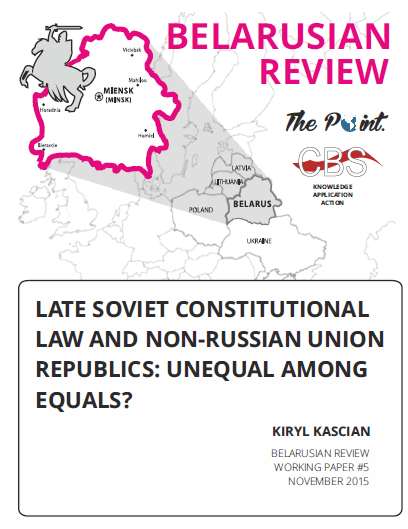- Kamunikat.org
- Бібліятэка
- Кнігазборы
- Калекцыі
- Іншае
Belarusian Review Working Papers 05
he Soviet Union was a multi-ethnic state which accommodated numerous nationalities within one political formation. Post-war developments of the official national policies in the USSR were characterized by the further rapprochement and merger of Soviet peoples and by the creation of a single Soviet culture. The ethnic composition and territorial division of the USSR predetermined a special role for Russian culture and language as tools for achieving these goals while, at the same time, the maintenance of the official historical canon and available options for each nation within this framework were centralized from Moscow. The Soviet constitutional system “employ[ed] “social engineering through law” and thus developed new meanings within quite standard terminology. With this regard, the 1977 Soviet Constitution was merely a reflection of the experiences of the Soviet state-building which complied with the situation in the Soviet society of that times. The adoption of the new constitutions of the union republics in 1978 was made according to the model and in compliance with the 1977 USSR Constitution. Nevertheless, it provided the union republics with at least two channels to assess and demonstrate identities of their titular nations.
- Месца выхаду: Прага
- Дата выхаду: 2015-11
- Выдавец: Беларуска-Амэрыканскае Задзіночаньне
- Copyright: © 2015 by Belarusian Review
- Кнігазбор: Kamunikat.org
Пры выкарыстаньні матэрыялаў у Інтэрнэце прамая гіпэрспасылка на Kamunikat.org абавязковая.
Ідэя сайту Яраслаў Іванюк
